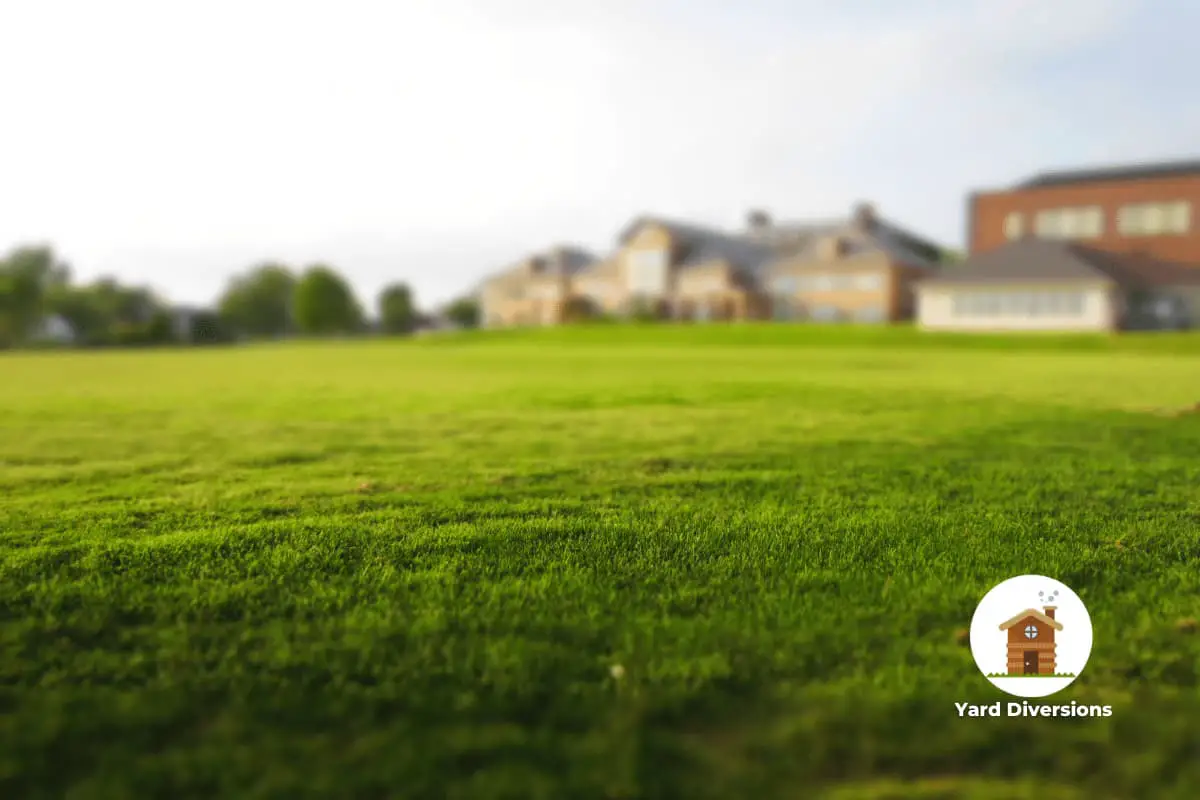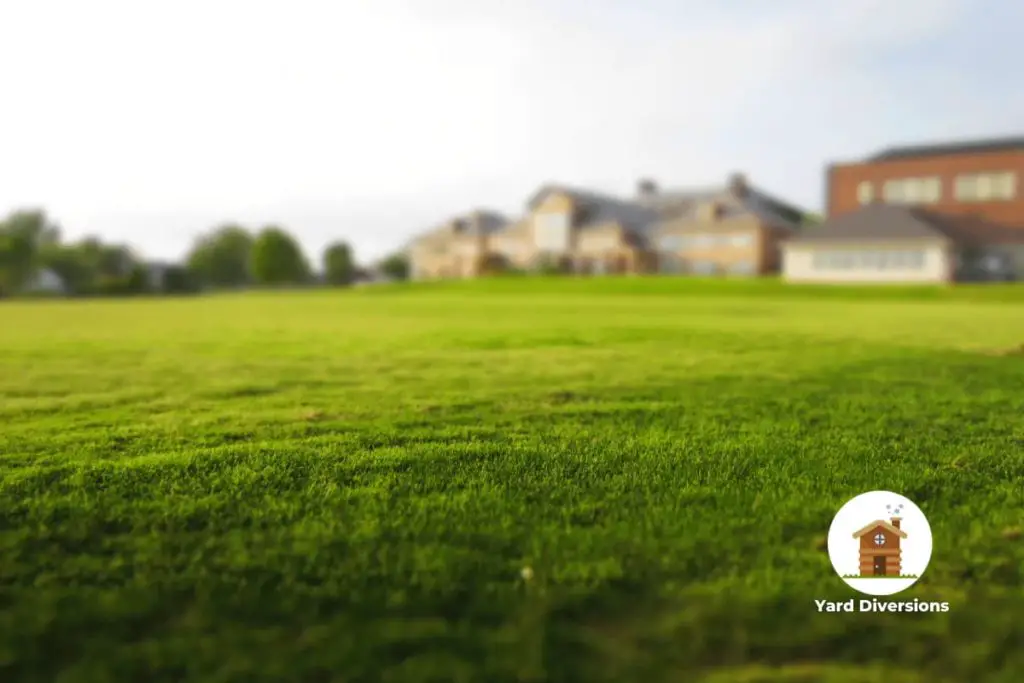While strolling on the grass or walking your dog, you suddenly notice that some places are darker than others. Also, the leaf texture is acceptable in some areas, but the blades have grown thicker in others.
All these have created thick patches of grass in some areas, and it has started to look very unpleasant. So, why do some patches of grass grow faster?
There could be several issues with your lawn that are causing it to grow thick patches. Occasionally, watering too often, mowing the lawn excessively short, fertilizing unevenly, growth of weeds, etc., could be the prime reasons.
Most lawn owners don’t even realize that the lawn is not growing at the same rate. But fixing all these issues is easier than you might think.
So, read till the end to know how to deal with these!

Why Do Some Patches Of Grass Grow Thicker?
Typically, thick patches of grass indicate that growth is faster in that area. Now, if you provide all the favorable factors and environment to accelerate growth, thick patches can grow in the lawn.
Maintaining a lawn is no less than art. In artwork, if you use some paint in excess, you don’t get the desired colors.
Similarly, when caring for a lawn, if you use unnecessary stimulants, the grass can start to grow at different rates.
Some of the critical factors behind grass growing faster are mentioned below.
1) Mowing The Lawn Too Often And Too Short
Actually, you do not need to mow the lawn at every given chance, and also not cut it too short. The general rule is to mow the grass up to one-third of their height.
For this purpose, you first need to measure the length of your grass. That is easy to do. You can measure the average height of your lawn in general. Or, just pick a few blades, and then measure the average length.
When you have mowed one-third of their height, there is no need to mow for a while now. So, for the next 4-7 days, refrain from mowing. However, the type of lawn grass also plays a role.
Also, never mow too short. It will remove the top growth buds (which contain the horizontal growth hormones). Ultimately, the grass will start to thicken near the roots.
2) Watering Excessively
Watering is the prime stimulant for grass growth. You may have noticed that the grass grows faster after rainfall. Why so? Because rainwater comes with the main food (water) and the nutrients that accelerate growth.
But you do not want to overwater your grass. Yes, the grass needs water to survive. But don’t overfeed them so that it may lead to obesity! In this case, it may cause the grass to thicken in areas.
3) Weeds In The Lawn
It may look from a distance that the grass has grown thicker. But it is actually weed that has started to grow in places and caused that area to look like a thick patch. Weeds are independently growing plants. You need to clean it out and prevent it from growing. Weeds start to grow in places when sufficient measures are not taken.
Most commonly, bunch-type grass weeds like Crabgrass tend to grow in lawns. They grow in the middle of summer along the footpaths and driveways. If you fail to recognize them, look out for some yellowish-green outgrowth in places. These are not sick or dead grasses. These are the weeds!
4) Dog Urine
It may sound weird, but letting your dog pee on the lawn is not a good idea. Dog urine contains substances that may fertilise the soil. Or, if the urine is highly concentrated, the grass in that area may die.
All these can lead to uneven growth of grass. You can notice areas of discoloration in places. And if your dog has been spending a lot of time on the lawn, you know what he did there!
5) Different Species Of Grasses
Apart from the weeds, this can be a bigger problem too. You might have sown some seeds in the past and added more later. Not all seeds germination occurs simultaneously. Or, maybe the species are different from one another and so they are exhibiting different growth patterns.
For example, coarse fescue grasses, Ryegrasses, and Kentucky Bluegrasses can grow wider and faster in clumps. On the other hand, Centipedegrasses tend to grow slowly. So, an admixture of these varieties in the same lawn can make the growth pattern uneven.
6) Fertilizing Unevenly
Actually, this is a common problem with solid pellet fertilisers. And if you have recently used manure or mulch the lawn, you may notice uneven growth a week later.
When fertilising, the manure should be evenly applied to all parts. Make a rough estimate of how much manure should be mixed with how much soil.
7) Loss Of Soil Ventilation
Compacted soil can never be good for your grass growth. Usually, when you walk a lot on the lawn or even drive cars over the lawn, or if there is a freestanding pool, the soil can lose its aeration. As a result, the soil gets very compacted and creates a hard, dry layer at the top.
So, the basic elements like water, nutrients, minerals, etc., cannot reach the bottom of the grass. Because the soil is very hard at the top, nothing can penetrate. The soil loses its ventilation. Eventually, the grass in this area will grow less. So, while the other areas are growing fast, this area shows zero growth.
8) Uneven Soil Nutrients
When you mulched or fertilise the lawn, perhaps you didn’t pay much attention to one side. And that area got deprived of nutrients. Or, maybe after mowing the lawn, you left the grass clippings on one side, and only that region got the most nitrogen.
All these may have led to the imbalance of soil nutrients. You can do soil testing, test the soil pH, and do qualitative and quantitative analyses to rule this out.
9) Mowing With Blunt Instruments
Basically, the blades of your lawn mower must be very sharp while mowing the lawn. If they have blunted over time, resharpen them at 3–4 month intervals. If you mow the lawn with blunted tools, the top edges of the grass will become very untidy. Rather than cutting the grass, blunted tools rip them up.
On the other hand, using sharp tools lets the grass edges be uniform and clean. Growth can occur evenly in all dimensions, and all grasses can grow at the same rate.
10) Shady Areas
Besides water, your grass also needs sunlight. If you deprive them of this major food, it can hamper their overall growth. Sometimes, you can notice big trees growing around the edge of the lawn.
The big trees cast bigger shadows. It causes a lack of sunlight in that corresponding area of the lawn. Ultimately, grasses in that area do not grow sufficiently. It can cause an uneven growth rate.
Troubleshooting Thick Grass Patches In The Lawn
If your lawn has already started to grow thicker patches in places, then do not worry. There are solutions to your problems!
So, after you have learned all the possible causes that have been causing the uneven growth rates, it’s time to learn how to solve it.
- Mown Too Short: Allow this batch to grow if you have mowed it too short. Let all the grass grow to a certain height, after which you will be able to mow again. Make sure to mow to one-third of the height in your next session.
- Watering Too Often: Why water your grasses more than they need? Rather than watering lightly every day, try deep watering at intervals. So, water your lawn for 30 minutes after 7-10 days. Or, you can even wait up to 15 days, depending on the weather.
- Weeds: Generally, lawn owners clean weeds manually with their hands. But it is very time-consuming and also pretty exhausting. So, try to clean when the weeds are minimal. Also, use non-selective herbicides to kill the weeds. After that, lay out the seeds for the new beds.
- Dog Urine: Whenever you see your dog doing his business there, just spray some water instantly. It will dissolve the elements and dilute them. So, all parts will get evenly saturated. Of course, do not let your dog pee on the lawn in the first place!
- Species: It is better to grow a single species of grass on the lawn. Or, different species grow at different rates and make it look uneven. Also, for beauty purposes, you can separate the lawn into two or more regions. Then, grow different species in each region.
- Fertilising Unevenly: Apply liquid fertilisers to get rid of this problem. It will help to fertilise every part evenly.
- Using PGI: Use Plant Growth Inhibitors to slow down the growth rate of the grasses in areas with thick patches.
- Soil Aeration: Break down the hard compacted soil using garden forks. Or, you can buy aeration tools from the store.
Can Brown Patches in Grass Affect the Growth Rate of the Grass in Other Areas?
If left unchecked, solving brown patch puzzle turf can affect the growth rate of grass in other areas. The spreading fungus can weaken overall turf health, leading to brown patches in various spots. Proper maintenance and treatment are essential to prevent the problem from impacting the entire lawn.
Conclusion
Your lawn will look as beautiful as long as you take care of it. If you fail to notice the things wrong with your lawn, your lawn will try to point them out to you in various ways. And one of these ways is uneven growth or growth of thick patches of grass.
So, why do some patches of grass grow faster? It is indicating problems in the maintenance of your lawn. Perhaps you were unaware of these and were doing some of these unknowingly. So, now you can solve the issues yourself! Thank you for reading it with patience. Have a great day!


